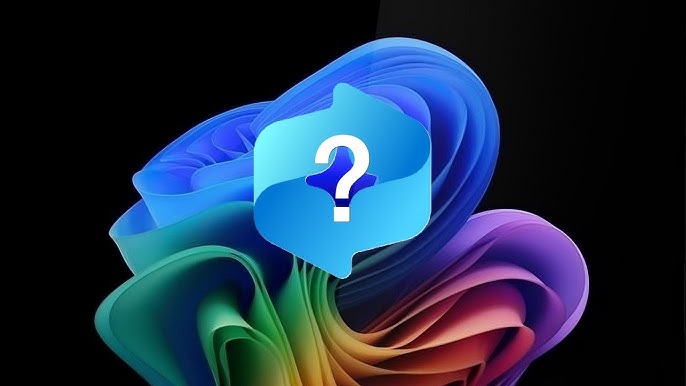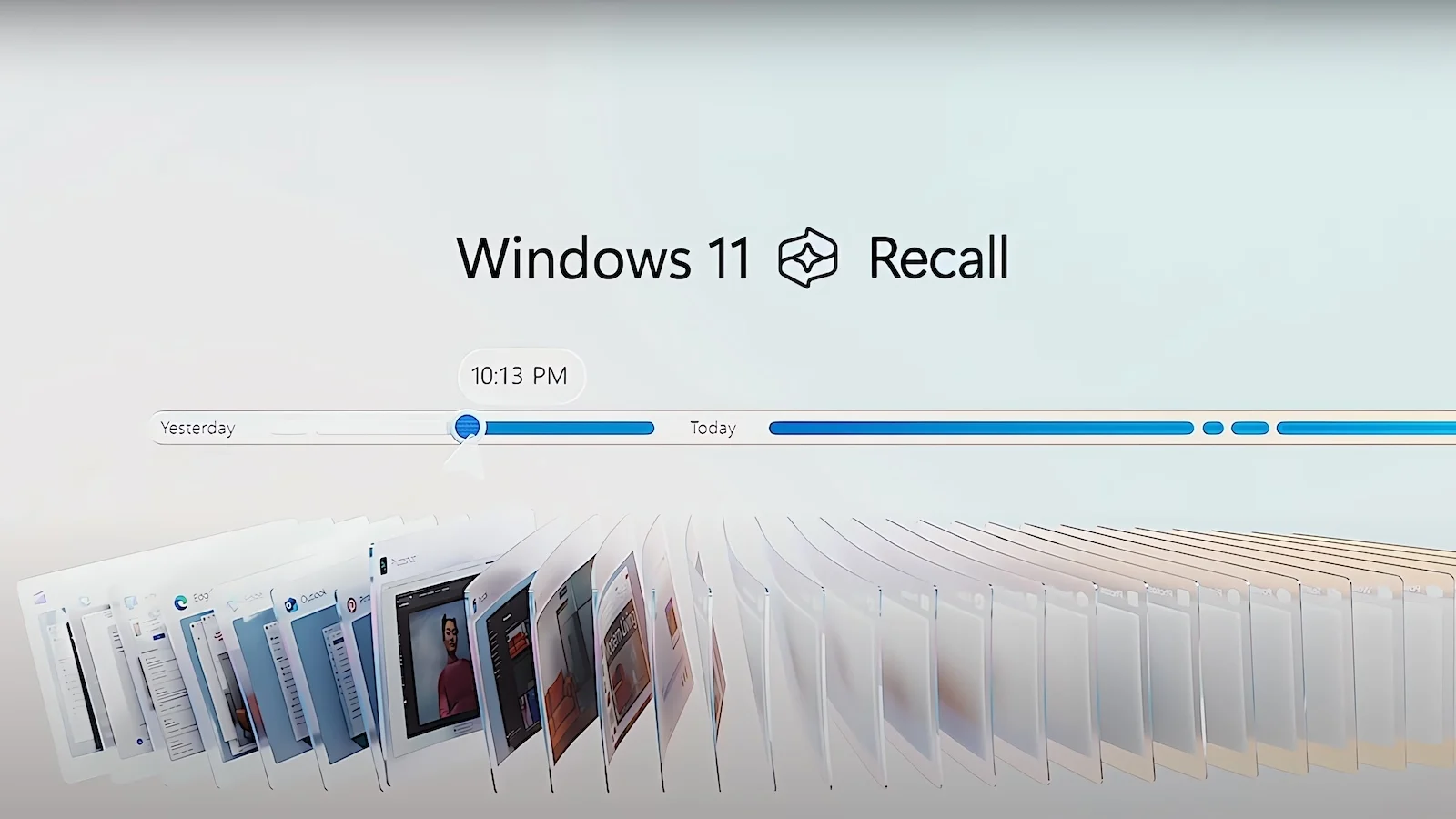Windows 11 24H2 Recall AI: What It Is, How It Works, and Why Microsoft Has Disabled It!
Introduction
The Windows 11 24H2 update, released recently, introduced a highly anticipated feature named “Recall AI,” which promised to revolutionize user experience by providing memory-like assistance for past activity, notes, reminders, and even context-sensitive suggestions. However, amid growing concerns around privacy, security, and potential data misuse, Microsoft has reportedly disabled Recall AI following significant public backlash.

In this post, we’ll dive into:
- What Recall AI is intended to do
- How it works under the hood
- User concerns regarding privacy and security
- Microsoft’s response to the backlash and the feature’s current status
What is Recall AI, and What Was It Designed to Do?
This AI app is part of the Windows 11 24H2 update, was introduced as an “intelligent memory assistant” aimed at boosting productivity by tracking user actions, documents, and even web activity in the background. It was marketed as a way to prevent users from forgetting recent tasks or losing track of important information.
Key Features of Recall AI
Recall AI was designed to:
- Assist with Task Continuity: Recall AI remembers recent applications, files, and even web searches, allowing users to resume their previous tasks seamlessly.
- Provide Contextual Reminders: Based on user habits, Recall AI would provide reminders related to recurring actions, such as logging back into a specific document or resuming a paused video.
- Intelligent Search Suggestions: It was set up to help users locate files, folders, or web history based on keywords or associated memories.
- Enhanced Productivity: Recall AI also had a note-taking feature to help manage schedules, deadlines, and even organize snippets of text across applications.
While these features were intended to improve productivity and make user navigation more intuitive, they quickly raised questions regarding the extent of Microsoft’s data tracking.
- Joystick / HOTAS – AMAZON.com
- Rudder Pedals – AMAZON.com
- Throttle Quadrant – AMAZON.com
- Gaming Chair – AMAZON.com
- VR Headset – AMAZON.com
How Does Recall AI Work?
Under the hood, this AI utilized an advanced model of artificial intelligence that logged user interactions across applications, files, and even certain websites. This information was processed to predict what a user might need based on past activity, enabling it to display relevant suggestions.

Data Tracking and Storage
Recall AI’s design included:
- Local and Cloud-Based Tracking: Recall AI combined local storage with Microsoft’s cloud services. Certain activities were stored on the user’s device, while cloud storage was available for deeper analytics.
- Pattern Recognition: AI algorithms analyzed repeated patterns, identifying which apps or tasks a user frequently revisited.
- Cross-Device Synching: Recall AI also had a cross-device synch feature for users with multiple Windows 11 devices, so tracked data could sync seamlessly between them.
Privacy Concerns and User Outcry
Despite Recall AI’s ambitious goals, many users were alarmed by its level of access to personal data. Concerns ranged from perceived “spying” to fears of Microsoft collecting more data than advertised.

Key Privacy Concerns Raised by Users
- Constant Monitoring: The fact that Recall AI continuously monitored user activity made many users feel uneasy, likening it to surveillance. Some voiced concerns about Microsoft having unrestricted access to every action taken on their devices.
- Potential Data Misuse: Users questioned what Microsoft planned to do with the vast amount of data Recall AI was collecting. Could this data be shared with third parties? What guarantees were there that sensitive information wouldn’t be mishandled?
- Personal Security Risks: Many feared that such extensive data tracking would lead to potential security breaches, with personal data falling into the wrong hands. Critics also noted the potential vulnerability of Recall AI’s cloud storage and the risks of data leaks.
Microsoft’s Initial Response
Initially, Microsoft attempted to reassure users by stating that Recall AI’s data collection was secure, with most processing happening locally on the user’s device. Microsoft also emphasized that cloud-stored data was anonymized, adding that users could adjust settings to limit the AI’s tracking scope.
However, these reassurances fell short for many users, especially those uncomfortable with the idea of a feature logging every action and task they performed.
Public Backlash and Microsoft’s Decision to Suspend Recall AI
Following mounting backlash on forums, social media, and various tech sites, Microsoft ultimately decided to disable Recall AI.
Why Was Recall AI Disabled?
While Microsoft has yet to release an official statement, it’s widely speculated that the volume and intensity of user feedback influenced their decision. Tech forums lit up with discussions around user rights, privacy concerns, and the potential security implications of Recall AI. Additionally, Microsoft likely recognized that the negative press could harm the rollout of the entire 24H2 update if left unaddressed.
The Future of Recall AI: Will It Return?
With Recall AI currently disabled, many are wondering if Microsoft plans to reintroduce it with stricter privacy safeguards or more granular user control.

Potential Paths for a Revamped Recall AI
- Opt-In or Opt-Out Feature: Microsoft could offer Recall AI as an entirely optional feature, allowing users to enable it only if they find it beneficial.
- Enhanced User Control: By adding more privacy controls and a detailed settings menu, Microsoft could provide users with greater power over what Recall AI tracks.
- Improved Transparency: Future versions might include clearer documentation on how data is used, stored, and secured, aiming to build user trust.
- Latest CPU’s Available Now – Amazon.com
- Get a NEW GPU Best Performance – AMAZON.com
- Upgrade RAM Here today – AMAZON.com
- Prebuilt PC Options – AMAZON.com
What to Expect Next
Given the high level of attention this AI feature has drawn, it’s likely that Microsoft will either address these concerns head-on in a future update or potentially shelve the feature indefinitely.
For now, those with the Windows 11 24H2 update should expect a more traditional Windows experience without Recall AI’s tracking and intelligent suggestions.
Conclusion

Recall AI may have had the potential to streamline productivity, but its approach to data tracking and privacy has cast a long shadow over its usefulness. Microsoft’s swift action to disable Recall AI in response to user feedback demonstrates a shift toward prioritizing user concerns over feature innovation. Time will tell if this AI will make a comeback or if Microsoft will pivot entirely, focusing instead on transparency and user control to avoid future privacy controversies.
Author
Brendon McAliece (Aka Gunnie) is a a military veteran with 23 years working on Jet Fighters, their weapons systems and ejection seat/module systems as well as munitions and R&D. Involved with flight simulation since the 1980s, he has flown all the major flight simulators over the years.
He is an Australian expat who has lived in Malaysia, UK, Saudi Arabia and more recently Thailand. He is a multi-lingual blogger who loves to share his life experiences here on LetsFlyVFR.com and DreamingGuitar.com, with his lifestyle and Travel experiences Blog plus his Dreaming Coffee website.
Learn More @ DreamingGuitar.com – DreamingCoffee.com – LetsFlyVFR.com
( HOME – BLOG – SHOP – ABOUT )

Pick UP an amazing AMAZON.COM gift for your better half!
As an Amazon affiliate I may benefit from qualifying sales.
